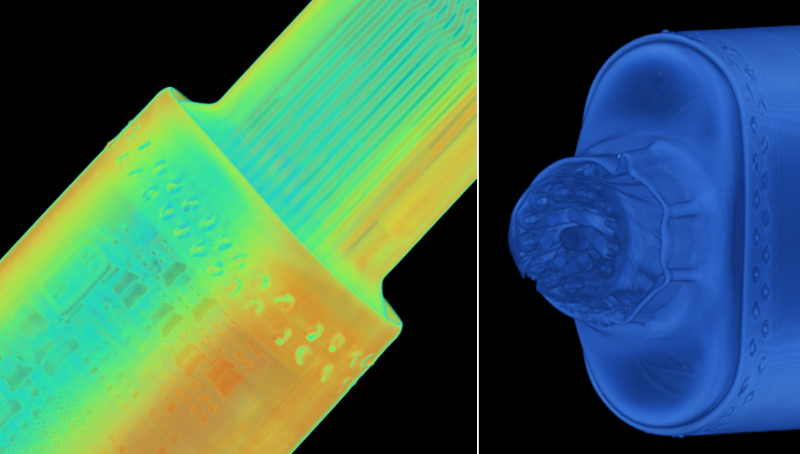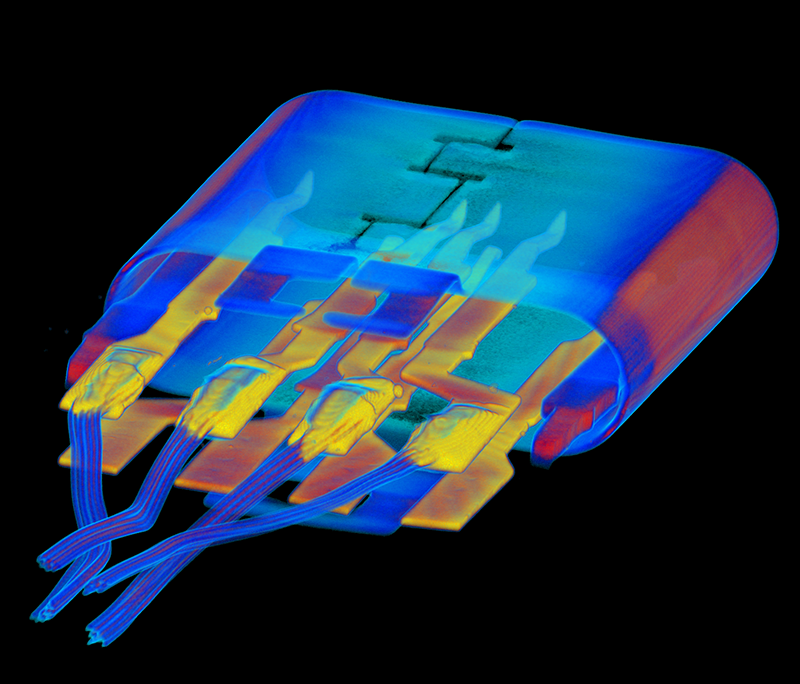[ad_1]

When Apple finally made the move to USB-C, it did so in a very Apple way. That includes the offering of a $130 Thunderbolt 4 (USB-C) Pro cable, one that’s actually $160 if you need the full 3 meters. Could one cable, an object whose job is to transfer power and data and be completely unnoticed, be worth that kind of cash?
Lumafield, maker of manufacturing-minded industrial CT scanners, studied this question across three dimensions. After scanning Apple’s top-of-the-line cable, a $10 Amazon Basics model, and USB-C cables costing $5.59 and $3.89, Lumafield had no definitive answer other than “we buy cables that meet our needs” and that “there’s plenty of room for clever engineering and efficient manufacturing” inside a seemingly defined spec like USB-C.
But we can say that if your goal is to buy one cable that will hold up to abuse, work with the power and data speeds of today and a reasonably distant tomorrow, and remove cables from your list of things that might be the problem? Lumafield’s images show why Apple’s alpha-cable might just be worth it.
24 pins, 9-layer board, stainless steel
The Neptune Industrial X-Ray CT Scanner is 6 feet wide and costs $75,000 per year on a standard contract, including advanced imaging and diagnostic software and support. By putting Apple’s Thunderbolt 4 Pro USB-C cable inside, Neptune was able to see literally everything that went into it. You can look at it, too, in a web version of Lumafield’s Voyager software.
-
The nine-layer PCBA inside the Apple Thunderbolt 4 (USB-C) Pro connector (top) and a view of the “vias” (connections) by filtering out the lower-density PCB material (bottom).
-
An example of a “wiggle” used to create trace length parity for high-speed data transmission in the Apple Thunderbolt 4 (USB-C) Pro cable.
With radiation and computed tomography, you can see that Apple’s cable has 24 pins, each separately mounted to a printed circuit board assembly. Those pins run through “a forest of blind and buried vias,” or connection lines running between components, both into the inner layers (blind) and sometimes entirely inside them (buried). To reliably reach the rated 40Gb/s data transmission rate, great care is taken. Parallel traces running from a line around a curve are laid out in “wiggles,” evening out the distance for the trace on the inside track.
All this is encased in hard plastic, laid over a stainless steel shield fully bonded to the connector, and a single-piece strain crimped on eight sides at the cord’s meeting with the connector. The cable is, as Lumafield puts it, “a stunning piece of precision engineering.”

A roughly $5 cable, since discontinued on Amazon, that looks like a $5 cable.
The not-so-Pro cables
Apple’s cable is rated higher than most other USB-C cables you can buy, supporting Thunderbolt 4, USB 4, 40GB/s, and 100 W of power. Still, you might wonder how different a lower-rated, much-lower-priced cable could be. Very different, it turns out, though sometimes not in the price/design order you might think.
Looking at the Amazon Basics cable, rated for 60 W power and 480Mbps data, there were half as many pins, and eight of those 12 pins were jumped across rather than landed individually to a PCBA. There’s metal shielding, far less robust strain relief, and a fully grounded shell. It has the parts necessary for its rating.
Then there are the sub-$10 cables, and, well, they look like it. One $5 cable—since discontinued on Amazon—has no shielding, an ungrounded and non-reinforced shell, rubber strain relief, and has the pins running straight to the wires, with no board in between. It also seems to lack the ability to provide the speeds it claims. A nearly $4 cable actually has that cable beat, with 24 full pins for what could be a more sturdy connection, despite only really using some of them for a power-only connection.
You can use in-browser software to get a full X/Y/Z and 3-D rotational view of each cable at Lumafield’s site. A $130 cable may still not seem worth it to you, but the insides of an expensive cable are sometimes full of more than hot air.
Listing image by Lumafield
[ad_2]
Source link

